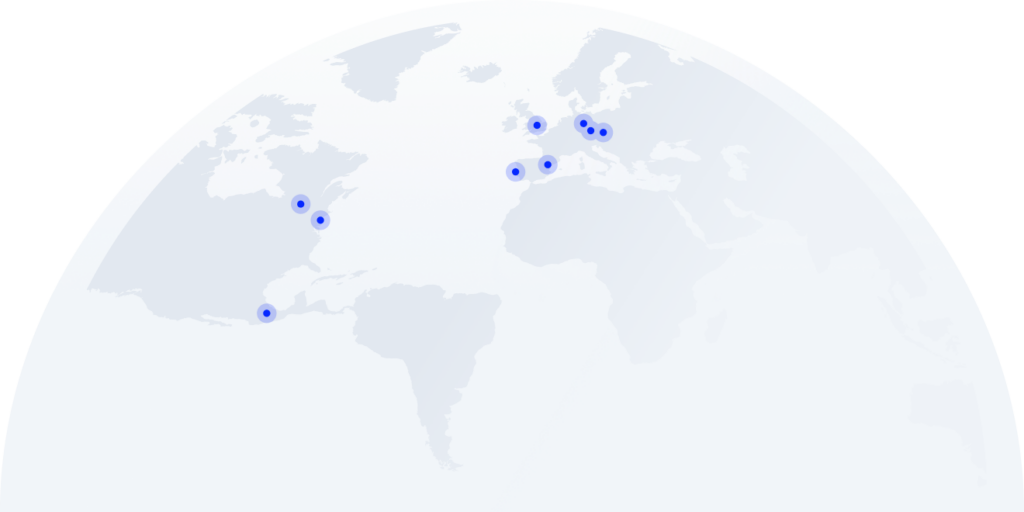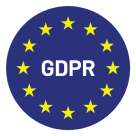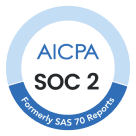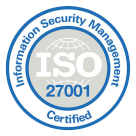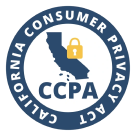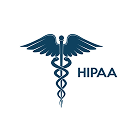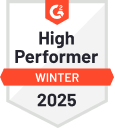How to Effectively Manage Call Center Overflow

It’s peak season and the phone’s ringing nonstop. Maya’s agents have a long queue of customers waiting to be assisted. And, she’s worried about the impact this may have on team morale and customer satisfaction.
The stakes are high—when customers face long wait times, frustration builds quickly. It takes 12 positive experiences to amend the effect of one poor one*, such as waiting in line to speak to an agent. Also, this excessive workload can take a toll on your team’s performance.**
But Maya’s incoming call flow isn’t usually this heavy and she doesn’t need extra team members to work during the whole year. So, if hiring extra help isn’t an option, what can you do to manage call center overflow?
In this article, we explore the challenges of call center overflow, share best practices to reduce it, and recommend KPIs to track for better service management.
Key Takeaways:
- Call center overflow happens when the volume of incoming calls exceeds your response capacity. This may affect your customer satisfaction and team morale.
- Using a UCaaS system to implement smart call routing, leverage remote teams, or implement self-serve options can help you reduce overflow.
- You need to track call center overflow KPIs to make data-informed business decisions, including changing your IVR system or hiring on-demand workers.
Cut wait times with AI-driven call transfers
What is Call Center Overflow?
Call center overflow occurs when inbound call volume exceeds your agent’s capacity. This usually happens due to peak demand seasons, unexpected technical errors, staff reductions, or a reputational crisis.
Peak demand is happening at Maya’s office. Her team is taking call after call and the queue doesn’t seem to get any shorter. Her agents are tired, stressed, and frustrated about answering the same questions repeatedly. Maya feels guilty for overloading her team, which prevents them from delivering the best possible customer experience, along with other challenges.
Call Center Overflow Challenges
Not being able to handle all calls has a direct impact on customer satisfaction. According to Bain, customers believe solving their issues on the first try is a key driver of a good experience.
However, this could also affect your team’s morale and performance.
Since your agents are the face of your company, you want to keep them engaged so they can offer the expected service quality. But during peak periods, call center agents are often exposed to:
- Rude customers. Having your customers wait for long periods could increase the chances of them verbally abusing your agents, causing them to feel emotionally drained. “I used to take between 40 and 80 calls a day. On average, I’d say for every 10 calls: 3 were fine, 4 were fine in terms of outcome but the customer was rude, and 3 were as described in this thread [verbally abusive]. It was horrible,” shares Reddit user: VillageHorse.
- Rushed or no breaks. During peak season, call center agents have no time to go to the bathroom, drink water, or simply stretch their legs. When this is sustained over time, it can impact work-life balance and efficiency.
- High stress levels. Agents can feel stressed due to seeing a big queue of customers while they’re already on a call, a demanding manager, or not finding the right solution for customers. Over time, this could also cause employees to feel disengaged, answer poorly, make mistakes, or quit.
According to SHRM, hiring new employees can cost you three to four times the salary for the position. So, thinking about your agents’ well-being and planning to retain them is also a way to protect your business.
You can start by using CloudTalk, an AI-powered solution to automate issue resolution, reduce long queues, and increase customer satisfaction.
Best Practices for Managing Call Center Overflow
Maya is tired of facing the same issues every holiday season. Luckily for her, there are many initiatives she can follow to handle call overflow, offer a great customer experience, and protect her team from burnout. Some of these best practices include:
1. Implement Smart Call Routing
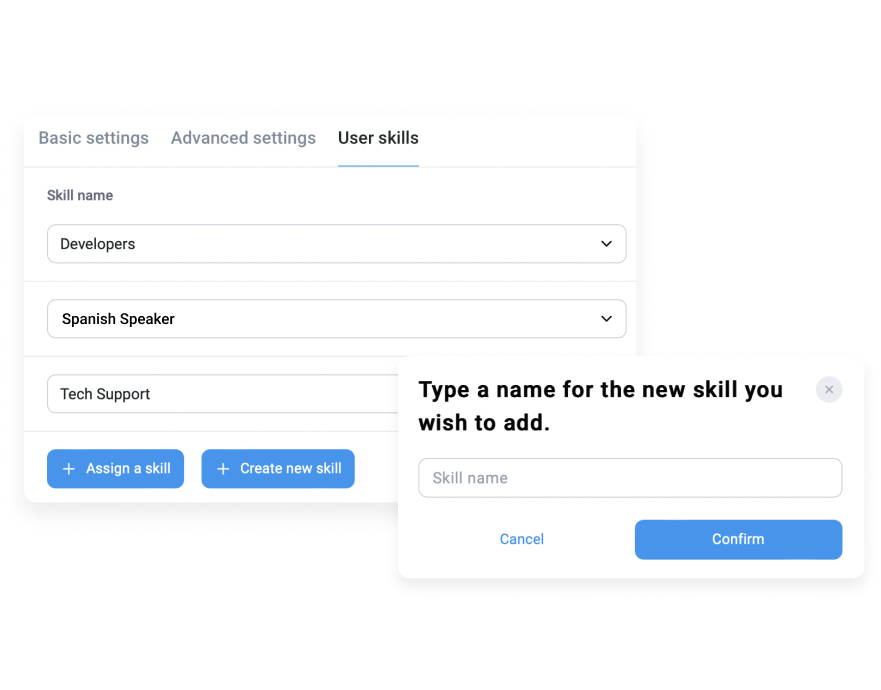
Use an interactive voice response (IVR) system to gather information about your customers and automatically redirect them to the most suitable agent or department. Properly distributing call volume enables you to prioritize high-value customers by using intelligent queues.
On top of automating call routing, you can integrate your calling system into your CRM to gain personal customer information and shorten call duration. For example, you won’t need to spend time asking customers for their data every time, you can see it directly on the CRM.
Using a tool like CloudTalk allows you to save up to three minutes per call thanks to its customizable and smart IVR. This way, you can connect customers to agents based on their skills faster and increase customer satisfaction. Plus, you can solve 30% more of your customers’ issues during their first contact.
2. Use Automated Self-Service Options
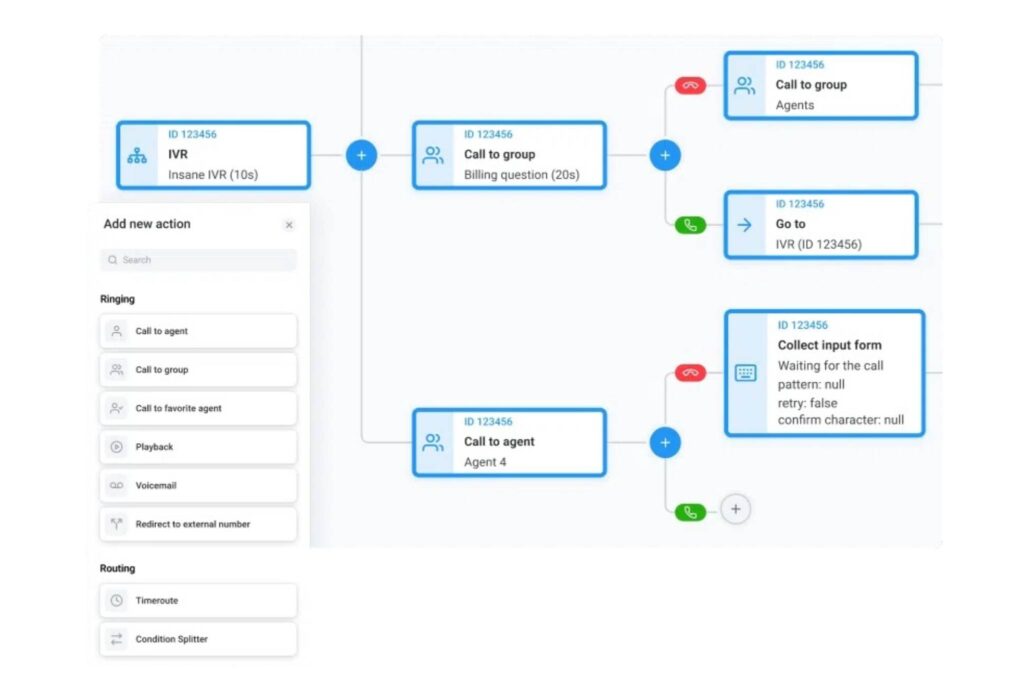
Most of your customers will likely face similar issues. That’s of course, unless there’s a technical issue with your site or unexpected customer behavior. So, instead of having your team answer the same questions each time and hold up the queue, implement functional self-serve options.
For instance, train and deploy AI chatbots, knowledge bases, or IVRs to solve common requests. Common IVR self-service practices include enabling customers to:
- Check order status
- Place an order or book appointments
- Reset passwords
- Access transaction history
Remember to add an option for customers to chat or speak to a live agent if they need further help. Additionally, if you’re using software that supports text-to-speech IVR, you can edit your automated menu as needed without having to pay for voice actors to re-record changes.
3. Leverage Remote and On-Demand Agents
Hiring on-demand or remote employees who can work from anywhere makes you more scalable. Also, adopting a hybrid and flexible workforce lets you offer better customer service during peak hours or seasonal demand without breaking the bank.
You can set up a smart routing flow for external agents to pick up certain calls as an overflow answering service. Using a tool like CloudTalk with one of the best IVR systems lets you manage remote operations from anywhere as it has the largest number coverage in the market. This means people can get local numbers, set them up easily, and use their own devices.
4. Optimize Workforce Scheduling with AI and Analytics
Your unified communications as a service (UCaaS) solution probably tracks call data, such as duration, wait times, satisfaction, and topics. Use an AI-powered solution to simplify data analysis and help you predict future call volume trends. This way you can identify when you’re likely to get a high call volume and which types of skills your agents need to have to answer customers.
Then, you can staff agents dynamically to answer real-time demand. For instance, if your peak hours are between three and five in the afternoon, get more agents to work this shift.
By leveraging AI, you can also guarantee your active agents have the right skills to answer most repeated questions. If you’re using CloudTalk as your virtual call center, you can also benefit from its workforce management solution. CloudTalk allows you to match your resources to call volumes and schedule your team properly to avoid under or overstaffing.
5. Implement Overflow Call Handling Partnerships
Partner with a company that offers call center services so it can handle all requests that exceed your team’s capacity. You should also consider business process outsourcing (BPO) or a dedicated company to manage these services if you:
- Need to reduce costs or pay a service fee without dealing with hiring costs
- Get uneven volumes of calls that are hard to predict
- Are growing and don’t have the capacity to train new teams
When following this model, you can choose to delegate some of the workload or fully outsource customer service. If you’re delegating work, don’t forget to set up failover routing to external teams and guarantee a seamless customer experience. Make sure to audit the performance of this team by analyzing call quality, brand consistency, and resolution.
6. Improve First-Call Resolution (FCR) to Reduce Repeat Calls
You want your agents to solve customer issues on the first call so they don’t have to call again. Train agents properly by giving them always updated scripts and resources so they can answer questions of all complexity levels and increase FCR.
Also, using AI-driven call analytics allows you to:
- Identify the common causes of repeat calls
- Build training resources around those topics
- Rethink your skill-based levels
And improve your overall service, reduce repeat calls, and shorten waiting queues.
Key Metrics for Call Center Overflow Management
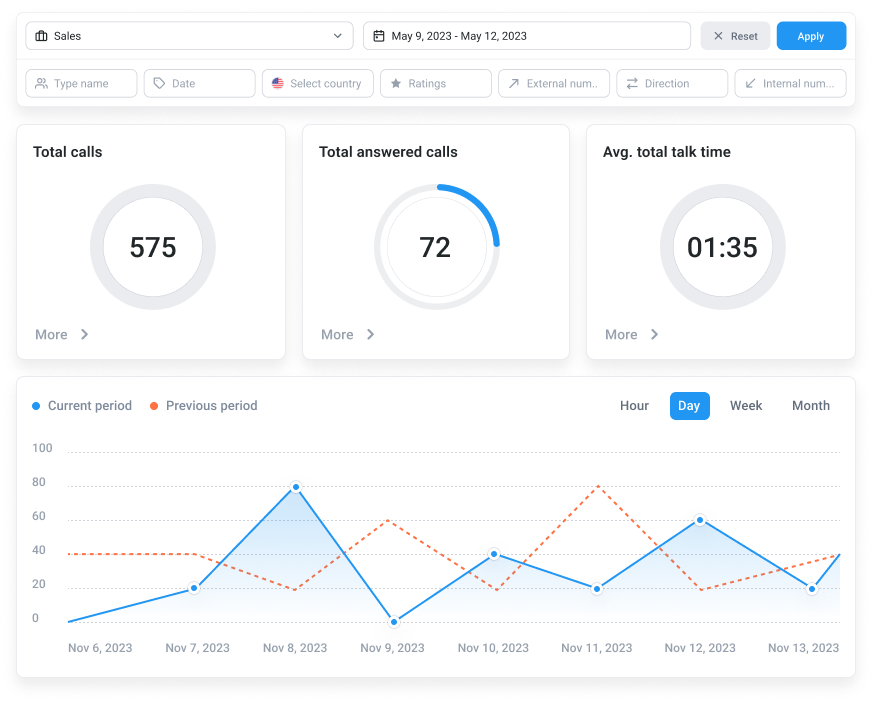
To determine which best practices would help lighten her team’s workload, Maya must first track and analyze call center data.
Here are key metrics to monitor to manage call center overflow:
- Average wait time: Understand how peak season queues affect overall service. Keep in mind that the expected average should be up to two minutes, including the time customers spend using the IVR.
- Call abandonment rate: Identify how long your customers are willing to wait in line to solve their issues. A high call abandonment rate means your average wait time is above their maximum tolerance.
- First-call resolution. Track the percentage of calls that are solved within the first contact and use it to assess your service quality. A high FCR indicates your agents are properly trained.
- Average call duration. The length of your calls could indicate multiple things, including your agents’ performance, the effectiveness of your training materials, or the complexity of customers’ issues.
- Peak hour traffic. Identify when your customers are most likely to call so you can properly plan your operations and offer a high-quality service.
- Agent utilization rate. Understand whether or not you need to use a BPO company, hire on-demand workers, or reorganize your team schedule to respond to the average call volume.
- Average speed of answer. This is a key indicator of team efficiency, although a low speed of answer could also affect customer satisfaction. When contrasting this KPI with others like agent utilization rate or FCR, you can identify if there’s an issue with your team skills or if the volume is simply too high.
- Cost per call. Understand how peak seasons affect your overall budget. You can also use this metric to decide whether or not you should keep customer service in-house or delegate it to a third party.
- Team morale. You can use HR tools or a simple Google form to assess how your team feels over time and identify if the overflow is affecting morale.
Manage Call Center Overflow: The Unskippable Tips
You need to track call center KPIs to manage the high influx of calls during peak hours or seasons without hiring extra agents. These include average wait time, FCR, cost per call, and agent utilization rate. Use the gathered information to set up initiatives that answer your business needs.
For example, Maya manages an ecommerce call center with peak season at the beginning of the summer. Most calls she gets are from customers asking about their order status. By looking at the data, she identified she could reduce overflow by implementing self-serve IVR options. Hence, customers can now call and get information on their orders without chatting with one of her agents.
However, if Maya had found that most calls were from people complaining about getting the wrong package, she would’ve likely had to consider other options.
Maya’s example shows that tracking call center data allows you to set up best practices that actually benefit your business. With the right strategies in place and by using proper software, you can handle peak demand efficiently while keeping your team motivated and your customers happy.
Using CloudTalk as your virtual call center lets you set up a configurable IVR with smart routing features, track your call data, and manage remote teams—all in one place.
Reduce call overflow with AI-enabled systems
Sources:
* Turn a Negative Customer Experience into a Positive One
** Workload
FAQs about call center overflow
What’s a call center call flow example?
What does call center overflow mean?
Call center overflow happens when inbound calls exceed agent capacity. Meaning that more customers are calling than agents who can take those calls. Callers may be redirected to another team, an external provider, or an automated system to prevent long wait times.











